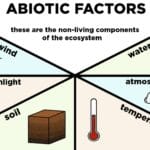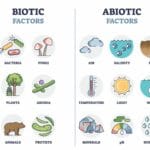Ready to conquer the underground world of Abiotic Factor’s farming system? This guide covers everything from picking the perfect plot to harvesting a bounty of crops. Get ready to unearth your inner farming expert and thrive in the depths!
Nurturing Your Abiotic Farm: A Beginner’s Guide
Farming in Abiotic Factor presents unique challenges, particularly when it comes to water management. This guide will equip you with the knowledge to overcome these obstacles and become a successful underground farmer.
Planting Basics: A Step-by-Step Guide
1. Establishing Your Agricultural Hub:
Begin by securing a plot of land to serve as your farming base of operations. Choose a location that provides sufficient space for your chosen crops.
2. Selecting Your Crops:
Not all crops are created equal in Abiotic Factor. Some, like potatoes, tolerate drier conditions better than others. Carefully consider each plant’s water requirements before making your selections.
3. Planting Techniques:
Certain crops, such as potatoes, can be planted directly from the food item. Others require the use of seeds. Familiarize yourself with the specific planting methods for your chosen crops.
4. The Art of Watering:
Water is a precious resource in Abiotic Factor. Regular and consistent watering is essential for the survival of your crops. While manual watering is common, explore automation options for increased efficiency.
5. Reaping the Rewards:
Monitor your crops closely for visual cues, such as changes in color or size, that indicate they are ready for harvest. As you level up your Agriculture skill, you will see an increase in your yield.
Advanced Farming Strategies: Level Up Your Yields
Ready to take your farming operation to the next level? Implement these advanced strategies for maximum output:
1. Fertilizing for Growth:
Fertilizers act as growth enhancers for your crops. Experiment with different types to determine which ones yield the best results for your specific plants.
2. Strategic Plot Placement:
Maximize space and water efficiency by carefully considering the placement of your plots. A well-planned layout can significantly impact your overall output.
3. Water Conservation Techniques:
Implement water conservation measures, such as utilizing rain collectors or employing in-game items designed to combat water scarcity.
4. Crop Rotation Benefits:
Avoid planting the same crop in the same location repeatedly. Crop rotation helps maintain soil health, prevents depletion, and can lead to improved yields over time.
Community Insights: Shared Experiences and Aspirations
1. The Automation Dream:
Many players express a desire for automated watering systems to streamline their farming processes. Explore potential in-game solutions, mods, or creative workarounds to address this need.
2. Farming Challenges:
Several players find farming in Abiotic Factor challenging, particularly due to the scarcity of water. Stay informed about any updates or developer responses that address these concerns.
Future of Farming: Speculation and Possibilities
1. Water’s Value:
The scarcity of water in Abiotic Factor encourages strategic resource management. Players must carefully prioritize crops and make every drop count.
2. Balancing Act:
Finding a balance between farming and exploration is crucial. Time spent tending to crops is time not spent uncovering the secrets of the underground world.
3. Anticipating New Features:
Based on community input and developer hints, new farming features, such as additional crops or expanded automation options, are likely on the horizon.
Demystifying Abiotic Factors: Understanding Plant Needs
To cultivate a thriving garden, it’s essential to understand the abiotic factors that influence plant growth. These non-living components of a plant’s environment play a crucial role in its well-being.
Light:
– Essential for photosynthesis, the process by which plants convert light energy into food.
– Intensity, duration, and wavelength (color) all affect plant growth.
– Different plant species have different light requirements.
Water:
– Vital for nutrient transport, maintaining cell structure (turgor pressure), and photosynthesis.
– Both underwatering and overwatering can harm plants.
– Different plant species have different water needs.
Temperature:
– Influences enzyme activity, metabolic rates, and transpiration (water movement within the plant).
– Plants have optimal temperature ranges for growth.
– Extreme temperatures can lead to stress and damage.
Soil:
– Provides physical support, essential nutrients, water, and oxygen to plant roots.
– Soil texture (sand, silt, clay) affects drainage, aeration, and water-holding capacity.
– Soil pH influences nutrient availability.
Air:
– Plants require oxygen for respiration (breathing) and carbon dioxide for photosynthesis.
– Adequate soil aeration is crucial for root health.
– Compacted soil can hinder gas exchange.
Additional Factors:
- Salinity: High salt concentrations in soil can inhibit water uptake by plants.
- Heavy Metals: Some heavy metals, such as lead and mercury, can be toxic to plants.
Unlocking the Secrets of Super Tomato Seeds
In the world of Abiotic Factor, Super Tomato Seeds are a coveted item, essential for crafting the highly sought-after High-Vis Vest. Here’s how to obtain these valuable seeds:
Crafting Super Tomato Seeds:
Super Tomato Seeds are crafted using the following ingredients:
Enethiol: A rare resource that may require trading with other players or extensive exploration to find.
Tomato Seed: Obtain these seeds by harvesting regular Tomatoes, which can be found in various locations, including the Office Sector levels.
Anteverse Wheat: Cultivate this unique wheat variety on your farm.
Once you have gathered all three ingredients, access the “Crafting” tab in your inventory and combine them to create Super Tomato Seeds.
Utilizing Super Tomatoes:
Super Tomatoes serve two primary purposes:
1. Trading:
Trade Super Tomatoes with the Blacksmith in exchange for a High-Vis Vest. This valuable item likely provides benefits such as increased visibility or protection.
2. Sustenance:
While their primary value lies in trading, Super Tomatoes can also be consumed as a food source, providing nourishment to help you survive the challenges of Abiotic Factor.
The 5 Pillars of Ecosystems: Unveiling the Impact of Abiotic Factors
Ecosystems are complex tapestries woven together by the interactions of living organisms and their non-living environment. These non-living components, known as abiotic factors, are fundamental to shaping the distribution, abundance, and behavior of life on Earth. Let’s delve into the five major abiotic factors:
1. Temperature: The Temperature of Life
Temperature acts as a master regulator of biological processes, influencing everything from the rate of metabolic reactions to the timing of migration and hibernation. Different species have evolved to thrive within specific temperature ranges.
2. Water: The Elixir of Ecosystems
Water is the lifeblood of our planet, essential for all known forms of life. Its availability shapes the types of organisms that can inhabit an area.
3. Sunlight: The Energy Source
Sunlight is the primary source of energy for most ecosystems. It drives photosynthesis, the process by which plants convert light energy into chemical energy, forming the foundation of food webs.
4. Wind: The Unseen Sculptor
Often overlooked, wind plays a vital role in pollination, seed dispersal, and even shaping landscapes over time. It can influence temperature, humidity, and the distribution of organisms.
5. Soil: The Foundation of Terrestrial Life
Soil is a complex mixture of minerals, organic matter, water, air, and living organisms. It provides physical support for plants, serves as a reservoir for nutrients, and offers habitat for a vast array of creatures.
















